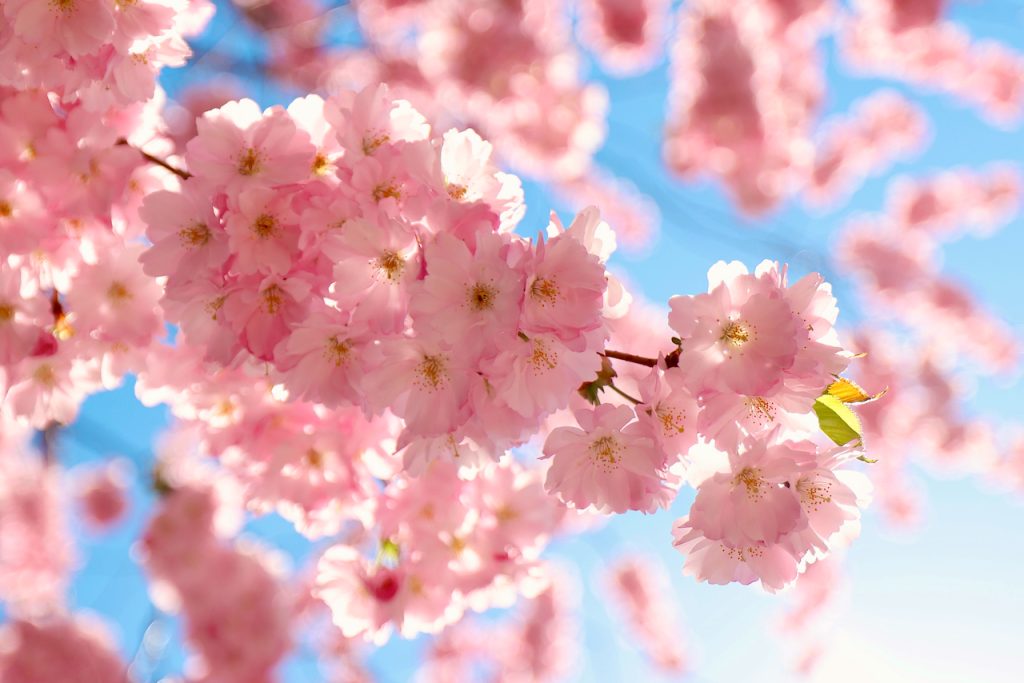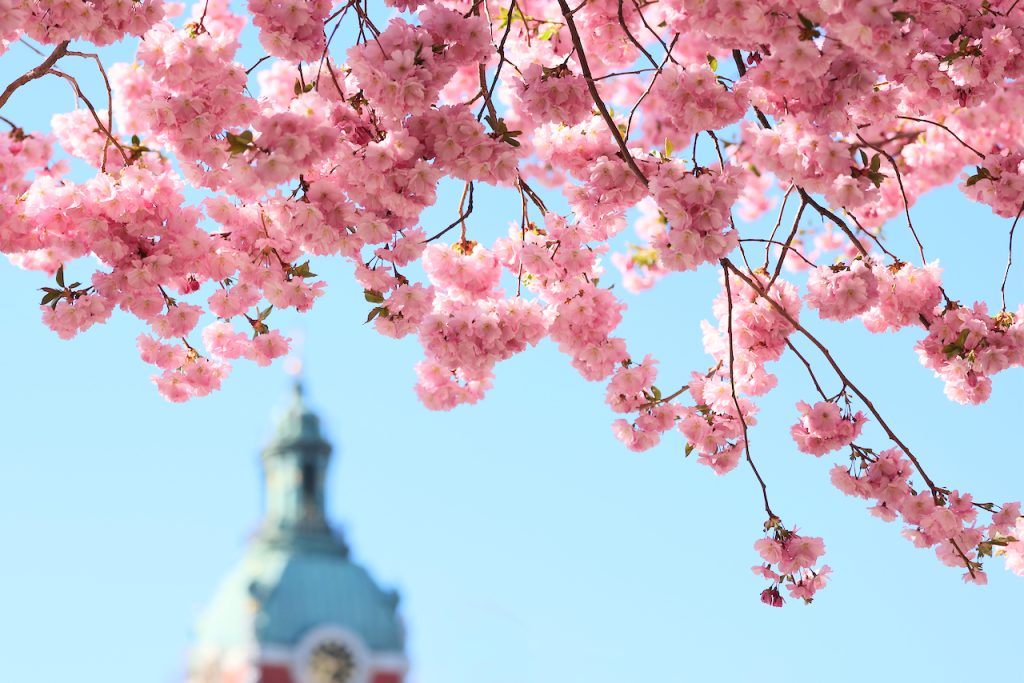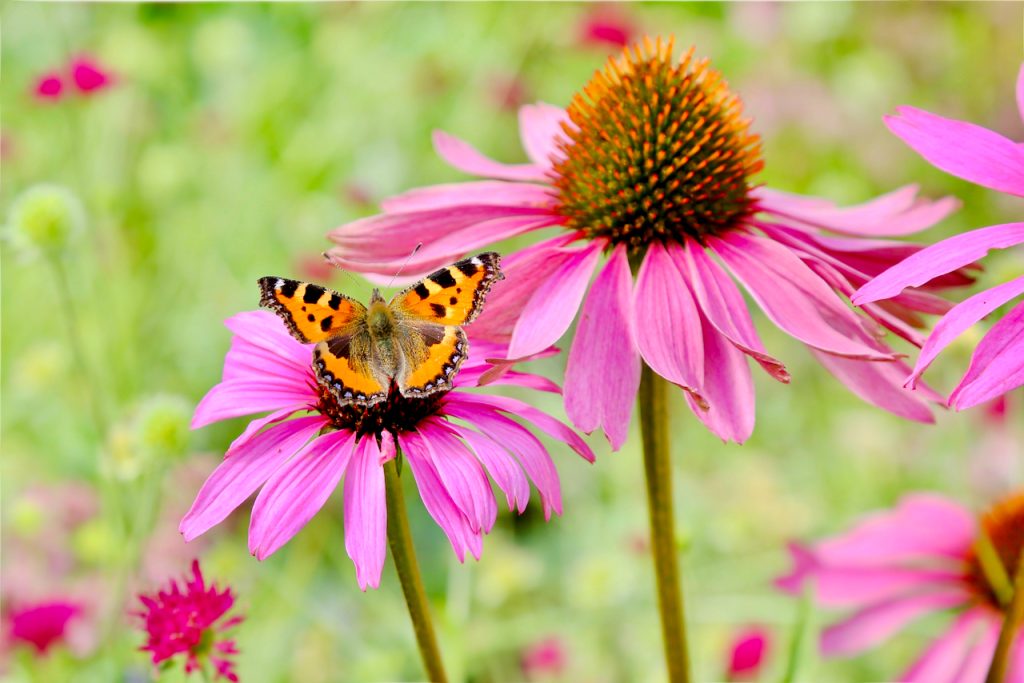
Every long journey starts with a small step; the easiest way to change is through tiny steps in our daily lives. Earth Day, celebrated today, can seem overwhelming when one browses their site. So much to do! How much would one person’s actions matter?
I feel disheartened sometimes when I look at the plastic debris on beaches or the garbage left behind by people in the woods. When I see how people buy houses and then cut down all trees and bushes, remove the flower beds, and build swimming pools instead. Or when the gardens consist of only perfectly manicured lawns, thoroughly cleaned up of any “weeds” or leaves.
All this has a terrible effect on the wildlife environment. Small animals like squirrels or hedgehogs, insects, and birds cannot find shelter or food in these sterile environments. For instance, dry leaves in the autumn may look unpalatable on that perfect lawn, but they offer shelter to overwintering insects and hedgehogs. Likewise, withered plants with their seed pods provide food for birds during winter.
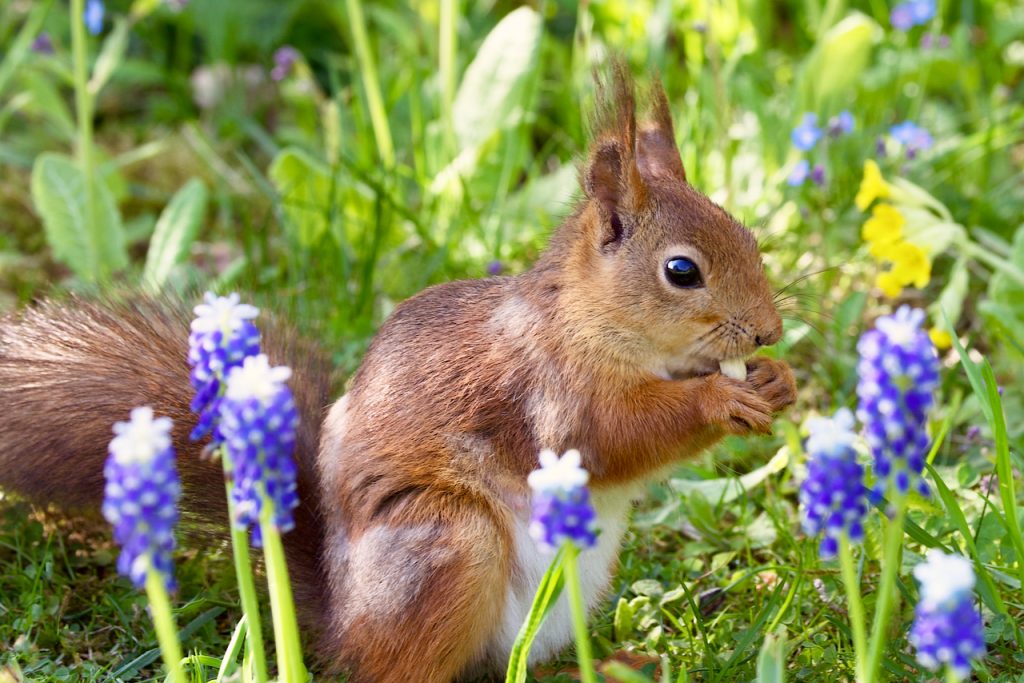
But where to start? What to do? We can start here, where we live. Yes, the devastation in some faraway countries may be terrible, and we give money to organizations that help protect the environment. I won’t argue with that. But there are small things we all can do in our everyday life to make life on Earth better for others than human beings. We’re setting an example by our actions, not by what we are talking about. More people may be inspired and will follow our example. But it all starts with the steps we’re taking at home.
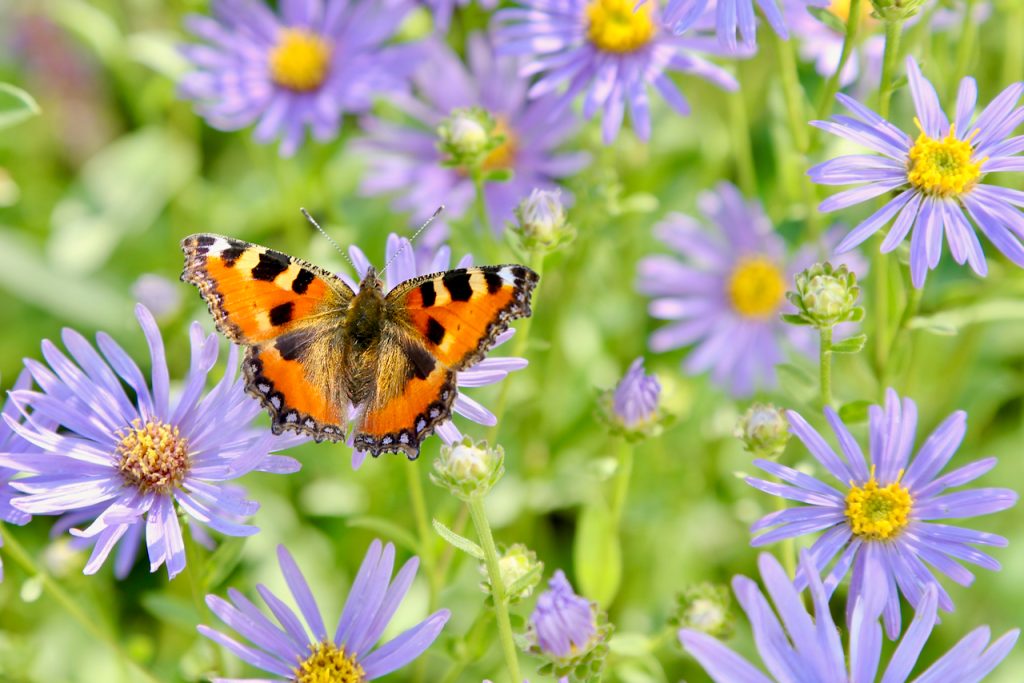
I love lists, so I’ve compiled one for you, small things you can do in your garden to attract wildlife and improve biodiversity. It’s good for nature and a lot of fun watching animals and birds go about their business. This is how I found myself sitting quietly for hours to photograph squirrels or small birds.
- To improve biodiversity, try to create various types of environments in your garden: trees, bushes, thicket, sand, rocks, water, flowers for all seasons, berries, old logs, twigs and branches. They all offer shelter and food to various species.
- Plant flowers and bushes that flower at different times so there’s always something in bloom in all seasons, from early spring to late fall so insects can always find soemthing to eat. Pollinators love yellow, blue and violet flowers.
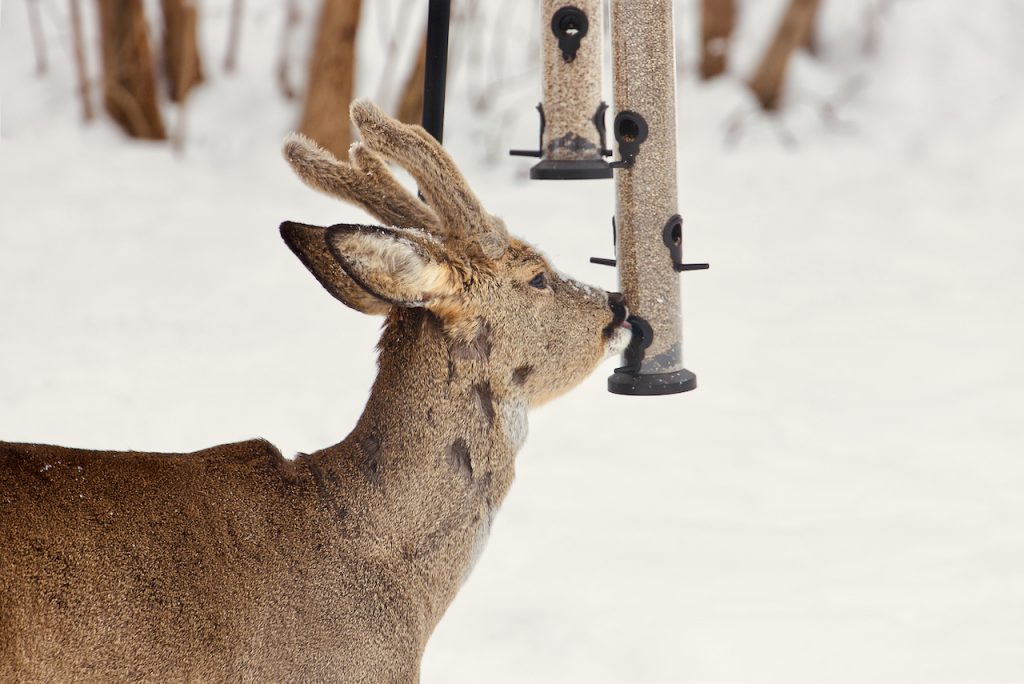
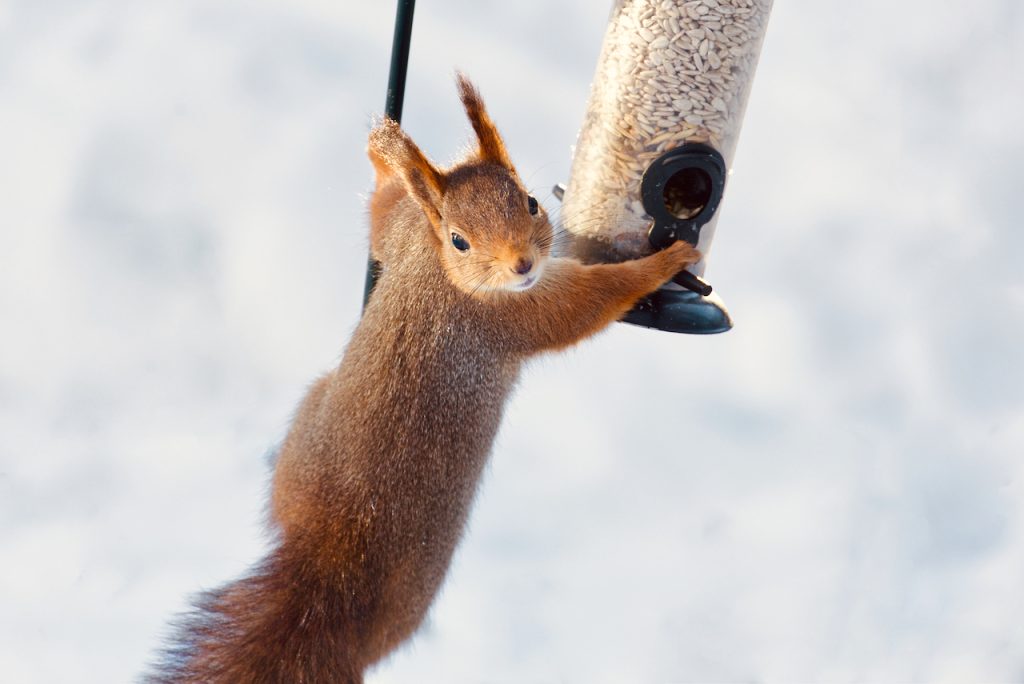
- Put out bird food during winter and place the food close to sheltering bushes and tress. Animals and birds are wary of open spaces.
- Put out water for animals and birds. For insects, use a shallow container with a few colored pebbles on the bottom to attract them.
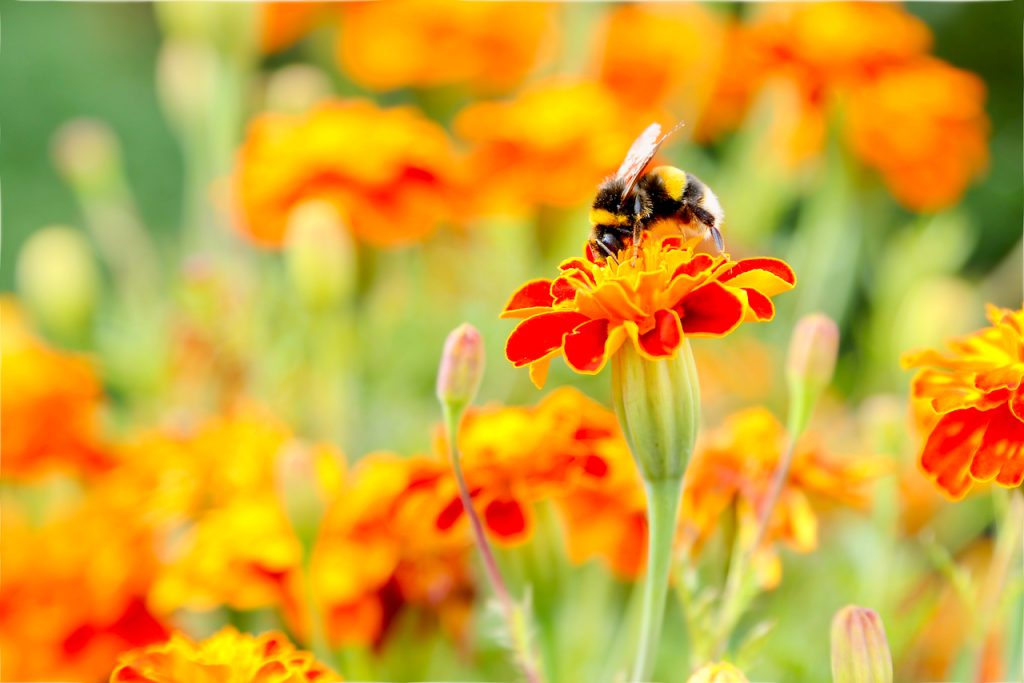
- Help the pollinators by planting flowers they love: lavender, thyme, borage, butterfly bushes, coneflowers (also called Echinacea), daisies, goldenrods, marigolds, snapdragons, heliotrop, and sunflowers.
- There isn’t a lot of food in early spring for insects and returningsmall birds birds so it’s a good idea to plant flowers and bushes that flower early, for instance crocus, snowdrops, wind-flowers, grape hyacinth, willow, and hazel.
- If it’s a cold spring, before the first flowers have appeared, put out some sugar water for insects. Mix 2dl sugar, 2 1/2 dl warm water, some colorful pebbles or glass beads at the bottom to guide them, as the flowers’ color would do.
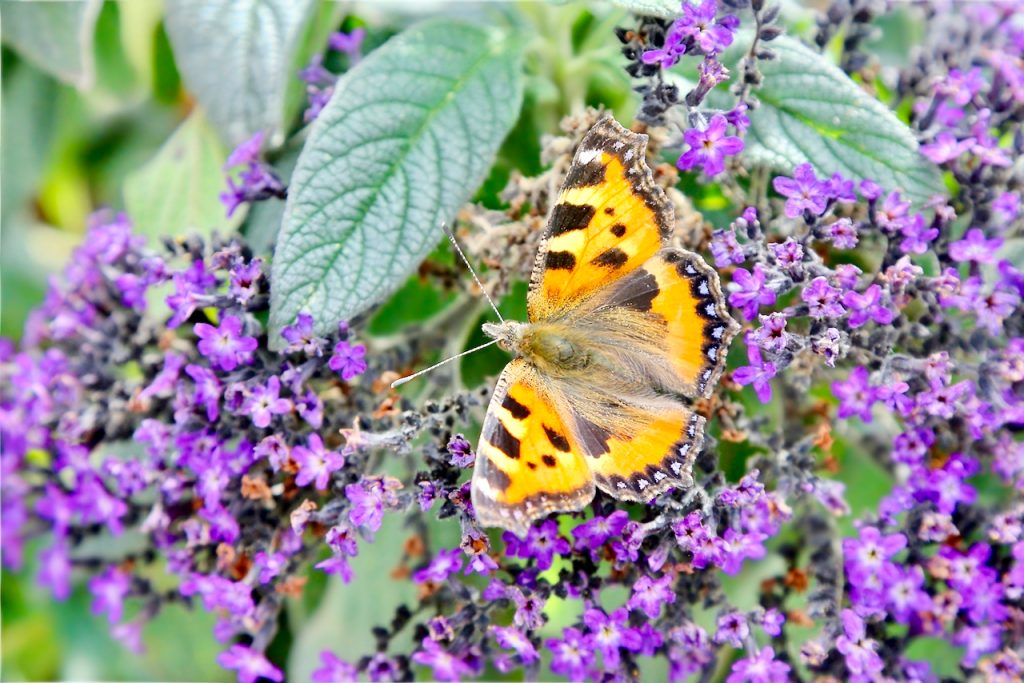
- Don’t tidy the garden too much. If you prefer a formal garden, have a “wild corner” where dandelions and nestles can bloom. They’re loved by the insects. For instance, the small tortoiseshell butterfly (pictured in the photo above) depends on its host plant (nettles) for feeding their caterpillars. A heap of dry leaves will provide shelter for hedgehogs in winter while some twigs will house insects.
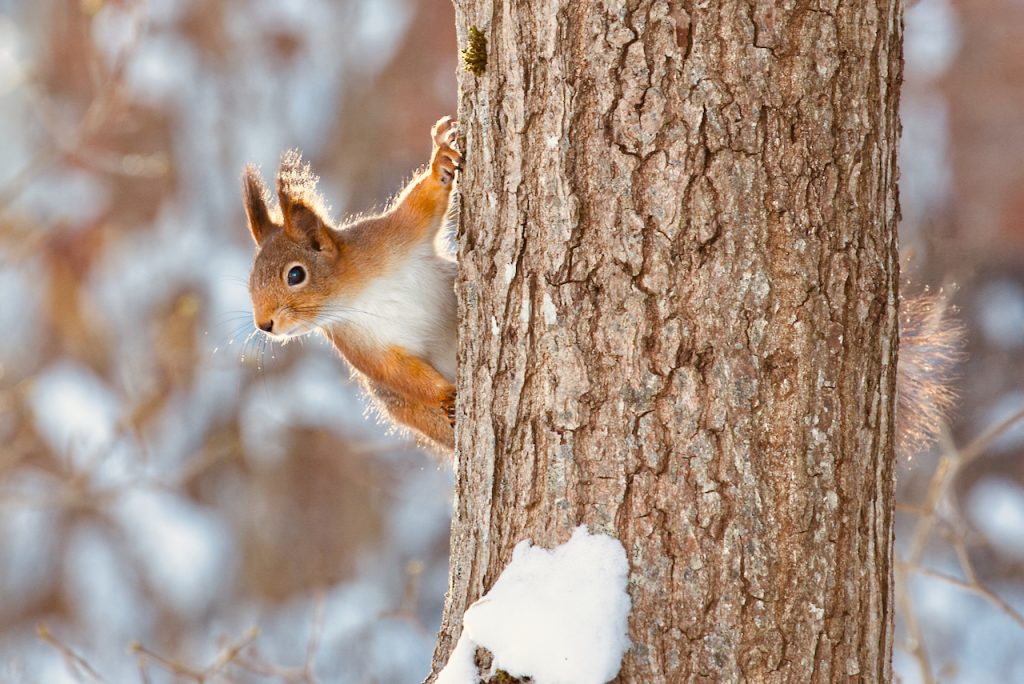
- Bushes and trees offer shelter to small birds, they attract insects in spring with their flowers and provide fruit and berrie for birds and small animals in fall. Use rowan, oak, hawthorn, privet, and hackberry, or chokeberry. If you have fruit trees, pick them by any means, but leave some for birds and animals.
- You can also plant sunflowers, the birds will love them.
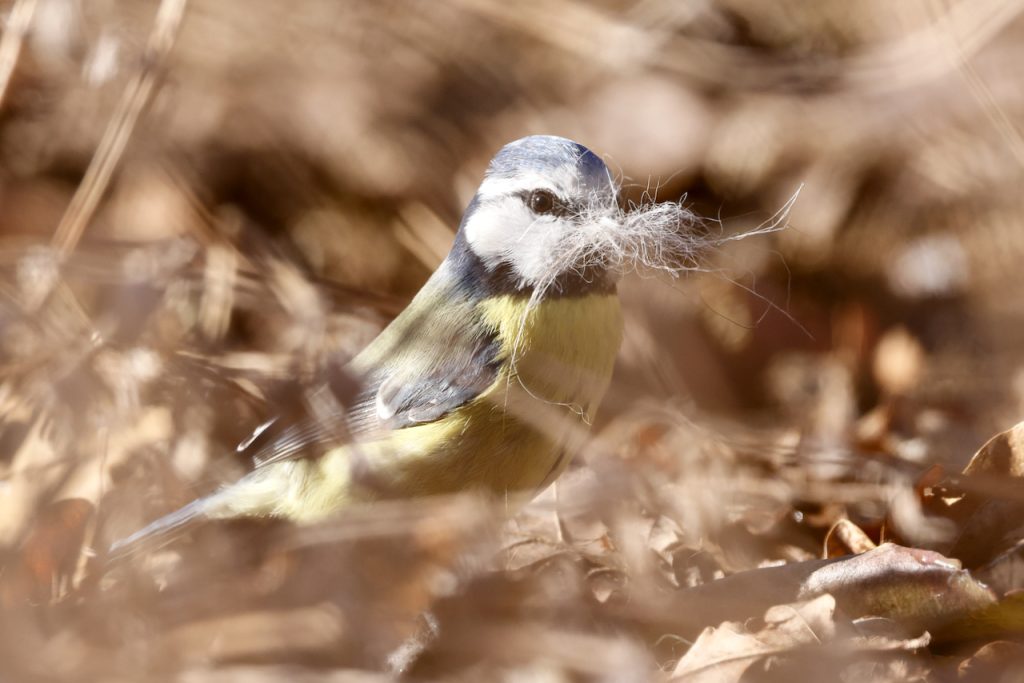
- Hang out small bird nests and insect hotels. You can build a hotel of what you have at hand. Include dead wood and bark, bamboo reeds, dry leaves and straws. DIY instructions are everywhere on the web.
- If you have a dog or a cat, gather the hair in a bal land hang it out. Small birds will use it for their nests. Some bees use the plant “hairs” instead so include lamb’s-ear, geraniums, mullein or any other “hairy” plants in your flowerbeds.
- Avoid using chemicals in the garden. If really needed, look for natural products.
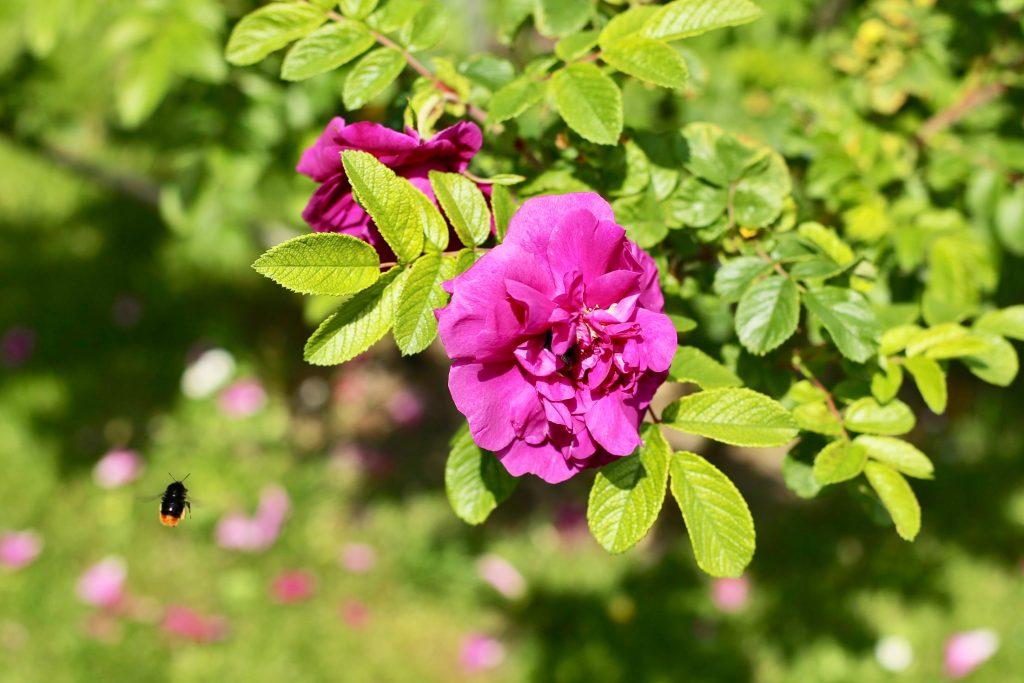
- Instead of a wood or iron fence, consider a natural hedge usch as dog rose or privet. I have a dog rose hedge that vibrates with insects during the summer months and its fruit provides food to birds in the fall. Small birds find shelter there, too.
- Start composting. You’ll get natural mulch for free.
To read more garden posts, click here. If you liked this post, share it on your preferred social network or forward it to a friend.
